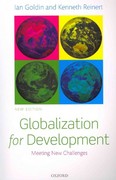The chapter describes how to solve for the effect of a tax on a market. But what
Question:
The chapter describes how to solve for the effect of a tax on a market. But what about a subsidy? A subsidy is when the government pays the producer or consumer for each unit they produce. Conveniently, you can solve a subsidyjust the same as a negative tax. In the market for vegetables, inverse demand is P = 50 — 2QD and inverse supply is P = 10+ 2QS. If the government implementsa subsidy of 8 (i.e. a tax of T: —8),calculate the new quantity, price paid PDandreceived PS, and deadweight loss.
Use a tax wedge graph with three different sizes of tax to show that the tax incidence share should be the same no matter how large the size of the tax.
B. Which of the following would have the same effect as a price ceiling imposed bythe government? Select all that apply.
a. A snowstorm shifts the demand for shovels to the right. But out of fear of retaliation for “gouging,” suppliers refuse to raise prices.
b. The supply for aluminum foil shifts to the left. But because people don’t buyfoil very often, it takes a while for the price to adjust.
c. An increase in the price of sugar shifts the supply for soda, increasing equilibrium price by $.05. Because vending machines take quarters, the pricemust change in amounts of $.25.
d. The government taxes oranges at $2 per bag.
C. Consider the market for pillows, in which inverse demand is P = 48 — 2QD andinverse supply is P = 12 + Q5. The government imposes a tax of T: 6.
a. Calculate the loss of consumer surplus that results from the tax.
b. Calculate the loss of producer surplus that results from the tax.
D. The government would like to reduce the quantity of coal produced to 25 units.
It thinks about two different ways of doing this. It could place a tax on coal largeenough to make the market produce 25 units, or it could put a quota of 25 unitson coal, giving licenses to current producers. Describe two differences betweenthe effects these laws have on the market.
E. The government from part B has decided to implement the tax. Inverse demandis P = 160 — 2QD and inverse supply is P = 40 + 2QS. The government hasdecided that it wants the quantity to be QA= 25. How large of a tax should it levy?
F. The market for almonds is currently shut off to foreign trade. Inverse demandis P = 40 — QD and inverse supply is P = 10 + Q5. The world price is PW= 15.
G. Consumers want the government to allow free trade for almonds, but the suppliers are worried about the competition.
a. Calculate the change in consumer surplus that would result from openingtrade.
b. Calculate the change in producer surplus that would result from openingtrade.
0. If the government wants to maximize total surplus, should it open trade?
d. If the government could make consumers pay producers for the right to opentrade, how much money would be necessary to get producers to agree?
H. When the market is opened for international trade, it ends up with the pricebeing above or below the no-trade market price. Similarly, when a price floor or ceiling is put in place, it ends up with the price being above or below theno-restriction market price. Explain how it’s possible that one of these policies(trade) increases total surplus, while the other (price restriction) reduces total surplus.
Step by Step Answer:

Globalization For Development Meeting New Challenges Meeting New Challenges
ISBN: 9780191624032
1st Edition
Authors: Ian Goldin, Kenneth Reinert






